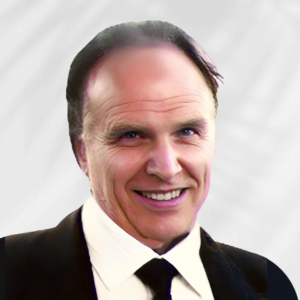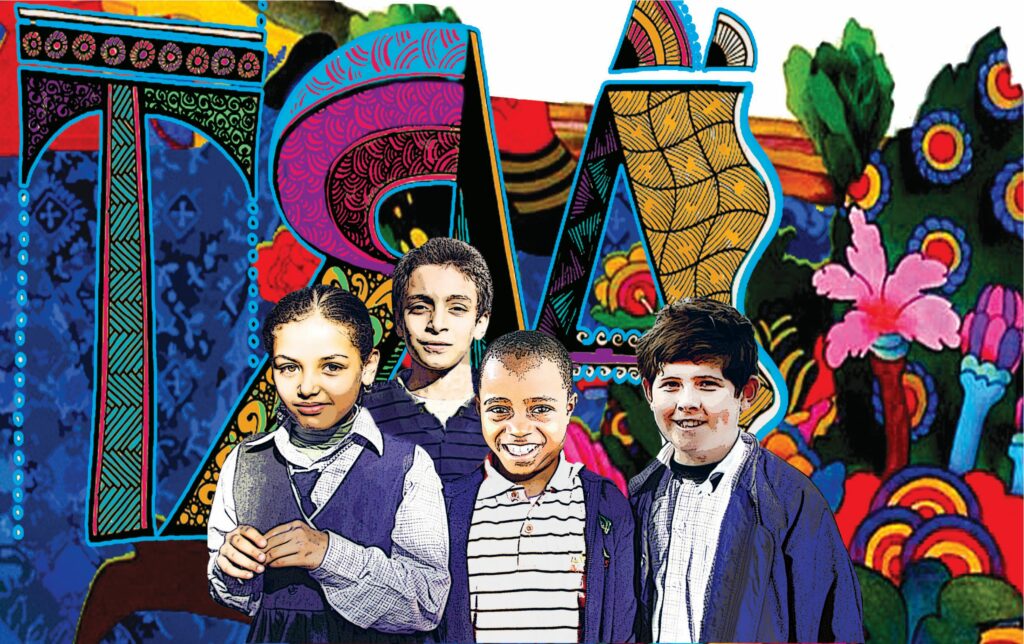Transactional analysis (TA) has proven to be an effective way of improving relationships with others and with oneself. TA is often used in the areas of medicine, communications, education and business management as well as therapy. The mainstream appeal of this technique has attracted parents, professionals, social workers, and others who strive to achieve the greatest personal development.
A key objective of Transactional Analysis is the building and strengthening of the view that each individual is valuable and has the capacity for positive change and personal growth
In effect TA gives people the tools to look at the thinking, behaviour patterns and feelings that stop them from achieving their full potential and success.
Dr. Eric Berne developed TA in the late 1950s, using the word ’transaction’ to describe the basic unit of social contact and with ‘transactional analysis’ being the study of social interactions between people.
Berne was influenced by Freud’s theory of personality – especially his belief that the human personality is many- sided and that different parts work together to produce a range of emotions, attitudes and behaviours. He also took special note of the complexities of human communication and highlighted the fact that facial expressions, gestures, body language and tone may be regarded as more important by the receiver than spoken words.
Any sign (speech, action or other unspoken cue) that acknowledges the presence of another person is called a transactional stimulus.
When any two people meet each other and the receiver reacts in a way related to the other person, that person has performed a transactional response.
The key to successful person-to-person communication generally lies the mutual recognition and appreciation of the states of being in the speaker and the listener of each other.
Like Freud, Berne saw that each individual has three ways of seeing and responding to events and people. Berne described these states as: The Parent, the Child and the Adult.
The Parent
The parent state is made of memories of outer events seen and experienced by a child from birth through the first five years of life.
These memories are not questioned by the child; they are accepted without question.
Examples of outer events recorded in this state:
- Do not play with matches.
- Remember to say: “please and thank you.”
The Child
The Child state represents all memories of inner events (feelings or emotions) that are directly linked to the outer events seen by the child during the first five years of life. Examples of events recorded in this state include:
- I feel happy when Mom hugs me.
- Dad’s late night movie was very scary.
- I feel sad when Mom is sad.
The Adult
The final state in development, is the period in which the child develops the ability to see and understand things that are different from what is seen (Parent) or felt (Child).
I’M OK – YOU’RE OK
Berne introduced the idea of life positions as our position, or attitude towards our self and others. Franklin Ernst (1971) later developed this idea into a diagram with four possibilities for the way we relate to others.
Feeling OK is not about material things, success or popularity. It is rather that respect that we have for ourselves and others as fellow human beings. The healthy position is I’m OK – You’re OK where there is problem solving and no blame. How you get along with people depends on the kinds of bridges that you build with them. If you are interested in others and interested in yourself then you can build a solid bridge of understanding and friendship with other people
Problem solvers
“I feel good about myself and everyone else, even though I
might not hold the same views and beliefs I respect that
we are both human.” Role: ADULT STATE.
BEHAVIOUR: Optimistic, positive attitude, work together with others, look forward, I think and believe that “I can” and get on with living.
I’M OK – YOU’RE NOT OK
Julie Hay (1993) described the concept of life positions as ‘Windows on the World.’ Each window gives us a different perspective as we look out of it; we interpret everything that happens to us to fit that window. The frames of our windows are our frames of reference – the core beliefs and attitudes that we have about ourselves and others. As we look through our choice of window, its as if we look at the world through distorting glass. The distortions will have been carefully developed over the years and we only notice what we are already determined to notice.
If you think that you’re OK and have no interest in other people and believe that they are NOT OK – you will have difficulty getting on with them. Your bridge will not be able to support an understanding and things will get mixed up and fall apart. This can lead to areas of conflict.
Blames others and avoids responsibility
“I believe I am right and know what I am doing and
everyone else is wrong.”
Roles: CRITICAL PARENT – NOT OK CHILD
BEHAVIOUR: Bully, competitive, defensive, critical, mistrustful, frustrated, angry and aggressive.

I’M NOT OK – YOU’RE OK
The four positions represent a fundamental stance a person takes up about the essential value he perceives in himself and others. These basic beliefs are used to justify decisions and behaviours. The four positions are permutations of whether we think we are OK or not OK, and whether we think others are OK or not OK.
If you have no interest in yourself, think and feel that you are not OK – and that other people are OK – you will have a shaky and weak bridge to connect with other people. Because you believe that you are a loser your relationships will be difficult. This can also lead to conflicts.
Blames self and avoids building own strengths
“It’s alright for them – things always work better for other
people, I’m never any good.” Role: NOT OK CHILD
BEHAVIOUR: Feels not good enough, looks for approval. Has low self esteem, feels guilty, fearful and a victim.
I’M NOT OK – YOU’RE NOT OK
Most of us operate from the I’m OK, you’re OK viewpoint but under stress we can move into our preferred unhealthy window. We might also use different windows for different situations for example, I’m not OK, you’re not OK in a personal relationship and I’m OK, you’re not OK in a professional relationship.
If you think and believe that you are not OK and that other people are also not OK then you will have no bridge to connect with them. You will feel as if you are always on an edge, about to fall into an abyss of strife and conflict.
Blames everyone and avoids responsibility
“I think there’s something wrong with me and
everyone else – it’s that sort of world.”
Role: NOT OK CHILD
BEHAVIOUR: Feels rejection, despair, gives up, expects self and others to fail, no point, no trust in self or others, doesn’t even bother.
In this shadow drama there are four players
Place : In the classroom
DAVID: The person who is in trouble.
SIPHO: The person that David is in trouble with.
SUE: The person that is trying to rescue David.
PETER: The person who is trying to help Sipho.
Scenario: David has played with Sipho’s calculator without his permission and broken it.
Peter: “Look what you have done – you have broken Sipho’s calculator. Now you are going to have to buy him a new one.”
David: “Why must I buy him a new one? It was cheap and useless anyhow.”
Sue: “Why don’t you try and fix it? I have some superglue that you could use.”
David: “That superglue won’t work.”
Sipho: (crying) “My dad is going to give me a hiding. He told me not to take his calculator to school and it’s new.”
David: “Stop whining, you’re such a wimp. Why are your eyes so skew?”
Sue: “Let me see the calculator, maybe I can fix it.”
David: “The parts are still on the floor. I don’t know where everything is.”
Sipho: “You are going to have to buy me a new one. “
Peter: “That’s right you broke it and now you must pay.”
David: “Who pressed your button? No one asked you for your opinion.”
Sue: Picks up the pieces and glues them together.
“See it was easy to fix.”
Peter: “Let me see.” He takes the calculator and drops it. Pieces fly in all directions.
David: “Oh Wow! Now you go and buy Sipho a new calculator.”
Peter: “No, you broke it in the beginning.”
Sipho: (crying) “My dad is going to give me a hiding. David you must get me a new calculator.”
David: “Oh no, it was fixed and Peter broke it.”
Sipho: “Yes, but I didn’t say that you could use my calculator and if you hadn’t used it none of this would have happened. “
Peter: “Yes, it’s all your fault.”
Sue: “I give up.” Leaves the group.
Peter grabs David and shoves him. David crashes into a desk and a bottle of glue flies off the desk and breaks into pieces on the floor.
Peter: “Now look at what you’ve made me do!”
Teacher: “What’s going on here?”
So, what has been going on?
Who are the victims?
Who are the players that are not OK?
Is there anyone that you think is OK?
Why do you think Sue is trying to rescue David?
Why do you think Peter is trying to help Sipho?
What are the different players doing wrong?
Have all the players been honest and truthful?
What feelings are shown in this story?
Notes:
All conflict begins with wrong thinking. From wrong thinking come wrong actions and reactions.
First ask: “What is the problem? What is the real problem?”
There cannot be a solution unless there is honesty about what the real problem is.
Ask yourself: “What do I believe about this situation or person?
Is this really true?”
Once you can see the truth of a situation it will no longer upset you.
Then ask:
“What are your options? What are all the different things that you can do?”
Be clear on what needs to be done and what you are trying to do.
What are the goals? What is your responsibility?
Do not get hooked into reacting or doing and saying things that do not help solve the problem or achieve the objective.
Do not make more problems or get stuck in the past.
Finally, how can you make the other person feel OK?
What would it take to make the shift to try and understand the other person’s point of view? Is this an impossible thing to do?

Ray Lacey is a CranioSacral Therapist (CST) and artist. In recent years he has devoted his attention to writing, illustrating and producing books. He graduated from Natal Technikon (DUT) in graphic art and from the Witwatersrand Technikon (JUT) in graphic design. He lectured at the same faculty in illustration and then worked as a freelance illustrator for many years.
In the late 1990s he developed an interest in the interpretation of children’s drawings. This led him to study remedial therapy for children with learning difficulties within the Waldorf School movement. In 2001 he undertook training in CST and qualified in 2002. Much of his work focuses on social upliftment projects and the adverse effects of vaccines, especially in children.
YouTube link:
https://youtu.be/p4kEgBpKpdc
Website:

